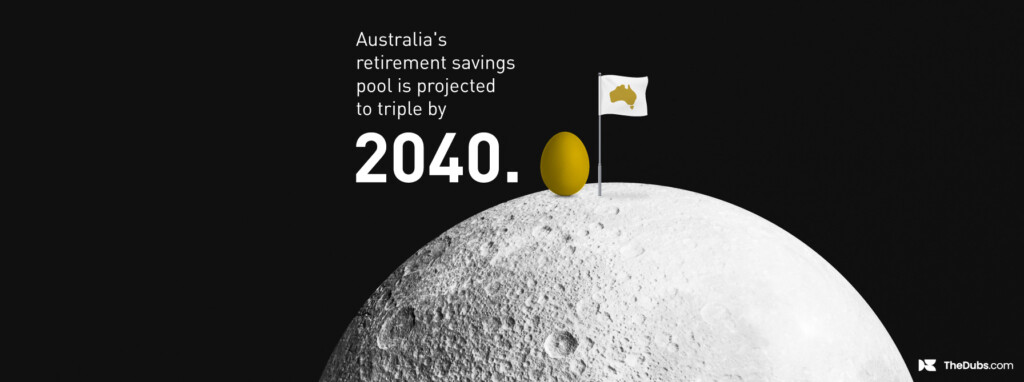Buying a home can be an emotional and complex experience for customers. It’s a large financial decision meaning customers scrutinise every aspect of a bank or lender’s products and services. With this customer mindset and countless banks and lenders to compete with, how can your finance brand utilise content marketing to capture this highly coveted (and lifelong) customer relationship?
With the average home buyer considering two banks or lenders when applying for a mortgage, 47% of them chose a brand they had no prior connection to and only 34% of them chose their primary bank. A strong content marketing strategy that is tailored to your finance brand’s target audience can be what makes your products and service stand out from the crowd. From your finance brands website to social media channels, how you market your home loans could either be a competitive edge or see you lose out on generating meaningful leads.
What consumers want from the home buying process
TD Bank’s Mortgage Service Index Report revealed what consumers found most important in the home loan process and what they liked. Overwhelmingly, consumers valued responsiveness, honesty and transparency, with 70% citing that as the most important aspect. This indicates a need for banks and lenders to create an informative marketing strategy that has the consumers welfare at the forefront. Other areas consumers find important in the home loan process include:
- Making the process easy-to-understand
- Personalised advice and guidance
- Education about all areas of the home loan process and affordability programs
- In-person consultations
These consumer insights can help banks and lenders understand how to market their home loans effectively by catering to the information and resources their target audience wants and needs. By marketing home loans through educational content, personalisation, and in a streamlined way banks and lenders can gain a competitive edge. Not just a case of expecting that a single educational content piece will lead to acquisition, when mapping out a content strategy banks and lenders need to consider how they’re addressing these needs at each stage of the home buying journey over time.
“ 70% of consumers view honesty, transparency and responsiveness as the most important aspect to home loan marketing strategies.”
Website content
When looking at the home loan content of banks and lenders in the US, UK and Aus, across the board website content was focused on providing a home loan calculator and fast statistics about the current interest rates. The majority of web pages were focused on providing information for people already looking to get into the housing market, not for people looking for more education. Brands that did particularly well with their home loan content were the ones that presented a hybrid of both, offering information for people who are actively looking for a home loan and those that wanted more financial education.
Additionally, having a content hub of home loan content that allows customers to explore a wealth of relevant educational content that addresses questions and queries at each stage of the home loan process is valuable for finance brands. A hub-and-spoke model could benefit your finance brand as it’s user-friendly and offers easy-to-access information that consumers want.
So, how should finance brands market their home loan content?
- Offer educational content at each stage of the home loan process to help ensure consumers understand key information.
- Offer an easy-to-use home loan calculator and fast statistics about current interest rates.
- Always encourage web visitors to seek further information through in-person channels.
- Gather key customer information, like emails and phone numbers, to enable your finance brand to nurture leads.
- Create a content hub that offers valuable information about each stage of the home loan process to help inform interested audiences.
In the UK, Barclays offers a hybrid of educational content and the key information individuals need to know in order to select the right loan product. With a vast array of content for first home buyers and everyone in between, Barclays targets different market segments through their informative content. While this content hub is what buyers are looking for, they could benefit from redirecting consumers to in-person meetings and gathering key consumer information through acquiring their emails or phone numbers.
Looking to the US, the Bank of America lacks educational content for the first home buyer but includes a simple home loan calculator that is easy-to-understand and operate. Additionally, they offer many opportunities to connect with a home loan specialist helping to capture vital customer information and nurture customer relationships ongoing.
Finally, Bank Australia offers a simple and clean user interface that showcases the key information for their four different home loans. While Bank Australia provides information in a clear and informative way, it relies on the consumer to understand the home loan process. One feature that Bank Australia has done well in marketing their content is that they have ‘Frequently Asked Questions’ at the bottom of the screen, aiding customers to find information quickly and easily. They also have a permanent ‘Apply’ symbol and ‘Enquire’ symbol at the top of the page when customers scroll, encouraging leads and enabling them to gain key consumer information.
Overall, Bank of America, Barclays and the Bank of Australia primarily catered their information to people who already understood home loans and what they were looking for. While Barclays did a good job of providing a content hub of educational content, the other two banks could benefit from including links to where customers can gain educational information to help build trust, loyalty and a strong customer relationship. Funnelling consumers to contact the bank is a great way of gaining important customer information and provides the opportunity to both generate and nurture meaningful leads. This was done successfully through multiple links and pop-ups.
Social media content
Home mortgage lenders, not banks, are much more active on social media in regards to creating home loan content. Unlike their websites which offer information to individuals that already understand home loan processes, social media is used for education and helping first home buyers understand the lending process. With informative posts that provide step-by-step guides to the home loan process, social media is a platform that intends to create authentic customer relationships through easy-to-understand content. Many lenders are also effectively utilising their social media channels by enabling chatbot messaging. On Facebook and Instagram, lenders encourage customers to ask questions, enquire about mortgages, and ask for advice creating multiple user touchpoints.
Social media content on Instagram, YouTube, and Facebook is more in-line across the board with what customers are wanting according to the TD Mortgage Service Index Report, as it’s educational, simplified, and creates a personal connection with consumers. On LinkedIn and X home loan providers are focused more on the business and its activities rather than the customer.
So, how should finance brands market their home loan products and services on social media?
- Create educational and easy-to-understand content to help inform customers.
- Utilise chatbot and messaging features to help customers and also nurture leads
- Create relatable content that connects with users emotionally.
In Australia, Aussie, a home lender and mortgage broker, utilises Instagram, Facebook and X. While X is utilised mainly for updating customers on Aussie’s charitable activities and business ventures, Facebook and Instagram are used to educate and build customer relationships. Creating carousels on Instagram that explain all aspects of the home loan process, for both experienced buyers and first home buyers, Aussie breaks down complex subject matter into small and digestible pockets of information. On Facebook, Aussie leans heavily on short video content focused on education and showcasing real Australian stories, building greater trust and transparency with audiences.
In the US, Omega Lending is active on Instagram, Facebook, and LinkedIn. Omega Lending Group’s content is focused on education and storytelling, with a lot of their content celebrating customer and employee stories. Their educational content is centred on short and simplified explanations of all areas of the home loan process, making it easy for anyone to understand. However, what they do particularly well is by connecting with customers through narratives. Purchasing a home for many is rooted in emotions so by playing off this exciting and joyous moment in many people’s lives, Omega Lending can create authentic and trusting relationships with consumers.
In the UK, Generation Home is active on Instagram, X, YouTube, Facebook, and LinkedIn. Generation Home is targeted at first home buyers, with their content centered on educating and informing customers about every aspect of the home buying process. On their Instagram, Generation Home blends educational content with content that showcases their team, helping to build strong connections with customers. YouTube portrays similar content with short snappy videos that explain the home loan process in a way that is easy-to-understand and engaging. X, Facebook, and LinkedIn are more centered on their business accomplishments, with a few of their educational posts from their YouTube channel and Instagram being displayed. Overall, Generation Home has created a targeted content strategy that is tailored to their specific audience through supplying educational and informative content. As they are targeting first home buyers, who may be more emotionally invested and uncertain about the buying process, they could create content that reflects this nervousness to form trust, strong customer relationships, and loyalty.
Home loan content marketing trends
Most home loan content is focused on providing information about the product rather than connecting with the customer and delivering solutions to their needs. While home loan product information is important for buyers to know, it can be intimidating and complex for first home buyers widening the approachability gap. Home loan marketing strategies should be focused on two things:
- Educational content – With around 67% of the world financially illiterate and 56% of consumers agreeing financial education would make them more comfortable engaging with financial institutions, this is an area of opportunity for home loan providers.
- Emotional content – The homebuying process is an emotional and idealised goal in much of the UK, US, and Australia. Creating content that tells the stories of individuals who have bought homes is a perfect way for your finance brand to encourage aspiration and action, to generate and nurture leads, and create authentic customer relationships.
To deliver for customers and your brand, home loan content needs to align with customer needs at each stage of the home buying journey. To improve your home loan content mix, banks and lenders should incorporate a mix of educational content that ensures customers are able to make an informed decision, before introducing product information closer to the bottom of the funnel. This content needs to be planned so that it supports customers over time, helping them to build trust in your brand.









